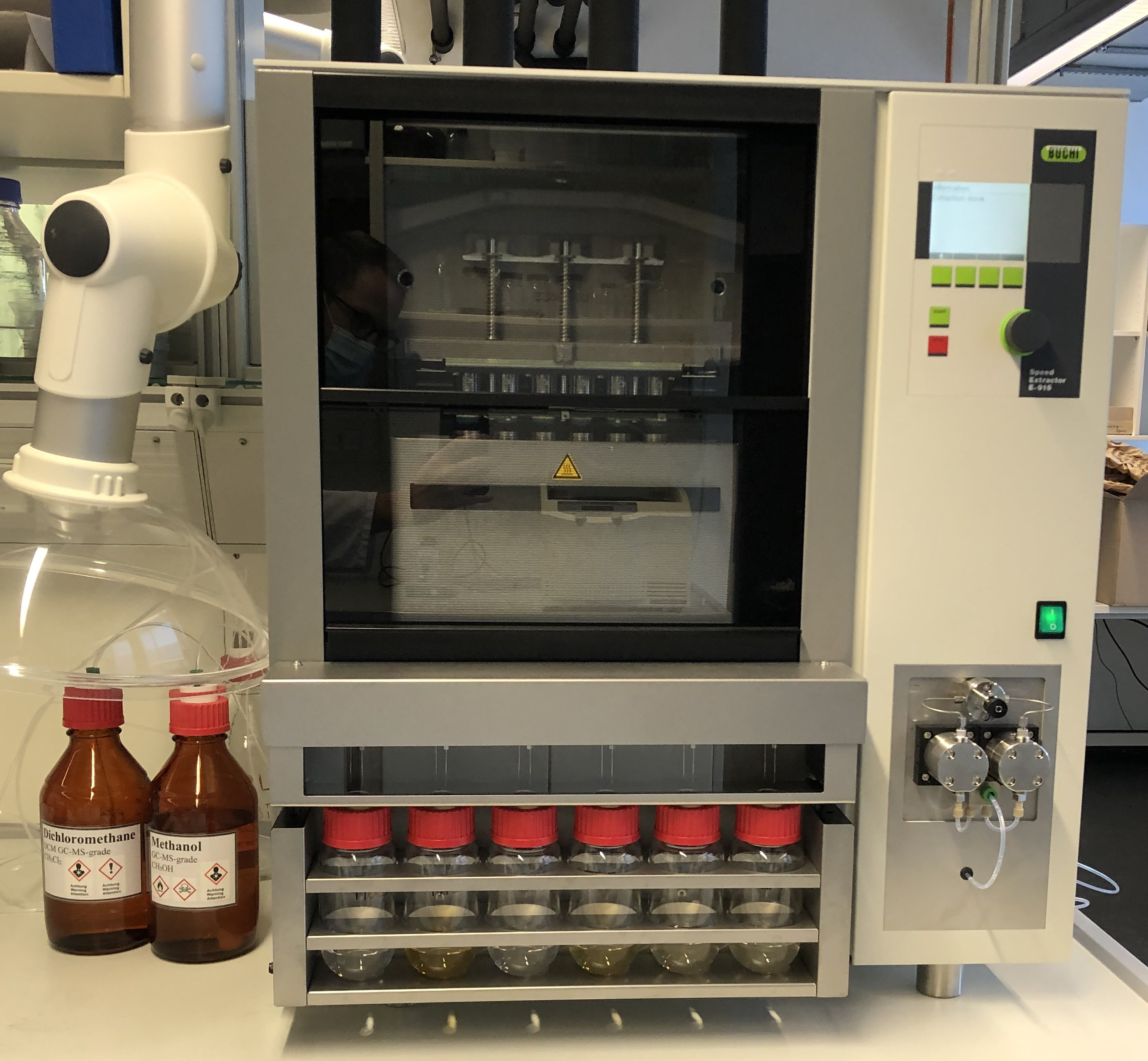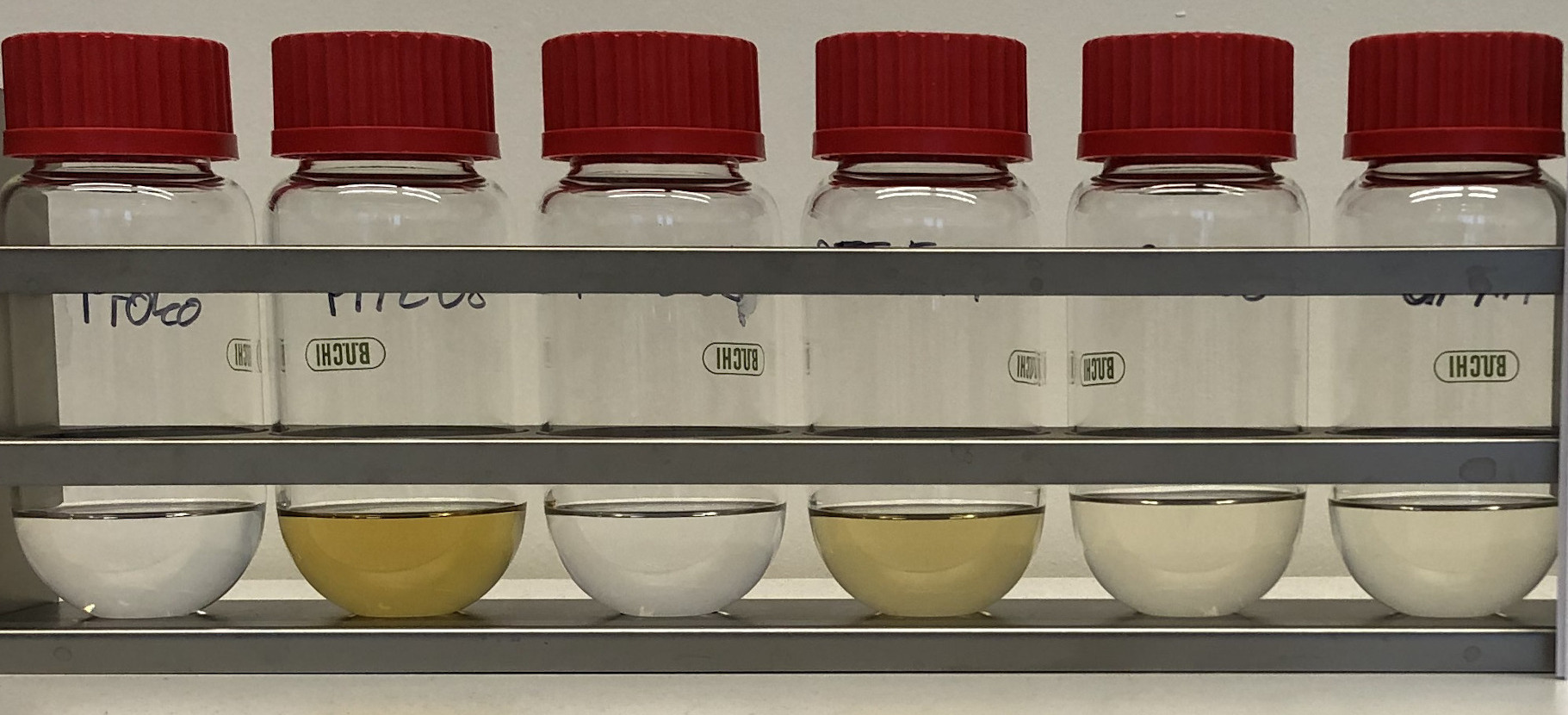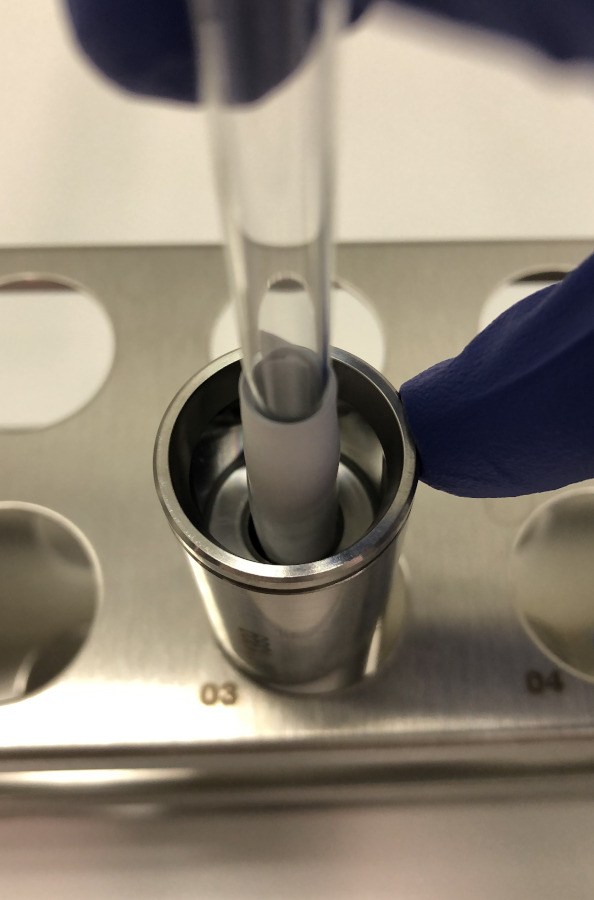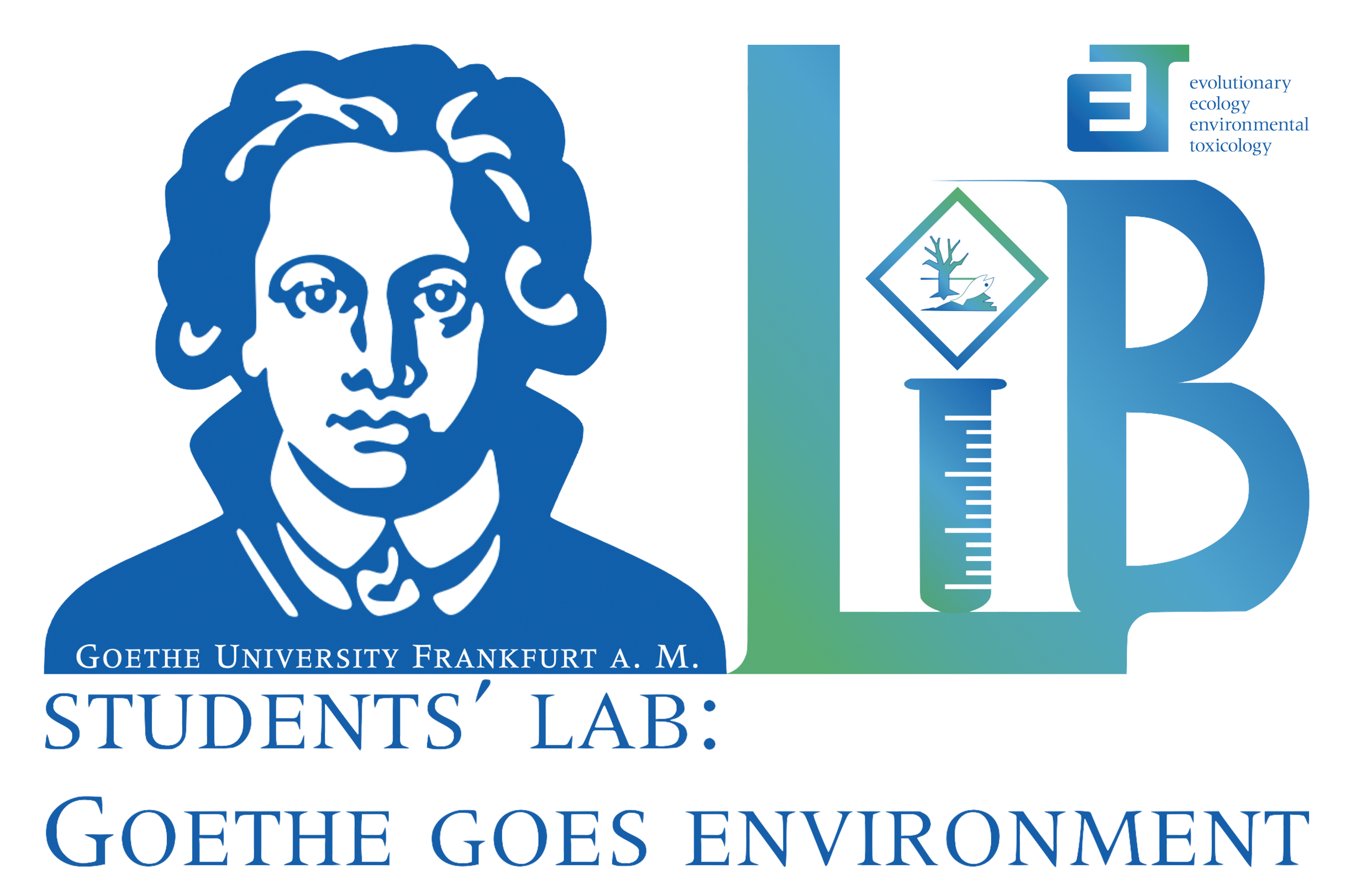Environmental matrices, such as river or lake sediments, can act as pollutant sinks, binding complex mixtures of environmental pollutants. However, unlike native water samples the investigation of sediment samples is not feasible in many biological in vitro or in vivo assays. Investigation of these matrices therefore require transferring the sediment-bound pollutants to a (more practical) liquid matrix. This is usually achieved via extraction. Extraction describes the process in which components are removed (extracted) from a matrix using an extraction agent (e.g., solvents). Extraction is a commonly used method in ecotoxicological sediment risk assessment to identify potential contaminants bound to sediments. There are various methods available with different degrees of extraction efficiencies and strengths, e.g., Soxhlet extraction or ultrasonic extraction. Here at E3T, we regularly perform pressurized liquid extration (PLE) using the BÜCHI SpeedExtractor E-916, an automated device for the parallel extraction of predominantly organic compounds from different matrices.

PLE is an efficient way to extract analytes from various matrices. The range of applications is comparable with classical Soxhlet or automated Soxhlet extractions. Many principles inherent to these techniques are also applicable to pressurized solvent extraction. In particular, polycyclic aromatic hydrocarbons (PAHs), which are an extremely important class in the context of sediment risk assessment, can be detected with the same or even higher efficiency from a wide variety of matrices (e.g., sediment or diesel soot). The major advantage of PLE compaired to conventional rechniques is less time consumption and it requires less solvent. In the literature, the terms pressurized liuid extraction, pressurized fluid extraction (PFE) and accelerated solvent extraction (ASE) are used synonymously (the latter being a licensed brand name).
PLE extends the parameters solvent and temperature of conventional extraction methods with the parameter pressure. By increasing the pressure, solvents can be heated beyond their boiling point while still remaining in a liquid state during the extraction process. Therefore, stronger extraction conditions can be accomplished. We use these harsh conditions of PLE to map a worst case scenario during ecotoxicological investigations.
PLE extends the parameters solvent and temperature of conventional extraction methods with the parameter pressure. By increasing the pressure, solvents can be heated beyond their boiling point while still remaining in a liquid state during the extraction process. Therefore, stronger extraction conditions can be accomplished. We use these harsh conditions of PLE to map a worst case scenario during ecotoxicological investigations.


In addition to the extraction of fluvial sediments, the SpeedExtractors E-916 is also apploed in the areas of food (extraction of fat from meat, oilseed, feed, dairy products, snack products, etc.), pharmaceuticals (extraction of analytes from natural from natural substances, of active ingredients from drugs and of pharmaceutical additives from feed) or polymers (monomer compounds, oligomers or additives).
- Aktuelles und Presse
- Pressemitteilungen
- Öffentliche Veranstaltungen
- Uni-Publikationen
- Aktuelles Jahrbuch
- UniReport
- Forschung Frankfurt
- Aktuelle Stellenangebote
- Frankfurter Kinder-Uni
- Internationales
- Outgoings
- Erasmus / LLP
- Goethe Welcome Centre (GWC)
- Refugees / Geflüchtete
- Erasmus +
- Sprachenzentrum oder Fremdsprachen
- Goethe Research Academy for Early Career Researchers
- Forschung
- Research Support
- Forschungsprojekte, Kooperationen, Infrastruktur
- Profilbereich Molecular & Translational Medicine
- Profilbereich Structure & Dynamics of Life
- Profilbereich Space, Time & Matter
- Profilbereich Sustainability & Biodiversity
- Profilbereich Orders & Transformations
- Profilbereich Universality & Diversity






